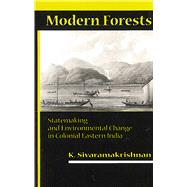
Note: Supplemental materials are not guaranteed with Rental or Used book purchases.
Purchase Benefits
What is included with this book?
| List of Illustrations | p. ix |
| List of Tables | p. xiii |
| Preface | p. xv |
| Glossary | p. xxii |
| Abbreviations | p. xxvi |
| Statemaking and Environmental Change | p. 1 |
| The Importance of Diversity | p. 1 |
| Statemaking and Political Society | p. 4 |
| Critical Environmental Histories and Substantial Political Ecologies | p. 13 |
| Narrative Sequences | p. 20 |
| Intimations of a Governmental Rationality at the Margins of Empire | p. 29 |
| British Entry into the Jungle Mahals | p. 34 |
| Introduction | p. 34 |
| The First Campaigns and Descriptions of Terrain | p. 39 |
| People of the Jungle Mahals | p. 48 |
| The Chuar Disturbances: A Politics of Place | p. 53 |
| Jungle Landlords and the Police | p. 58 |
| Zones of Anomaly in Woodland Bengal | p. 63 |
| Geographies of Empire: The Transition from 'Wild' to Managed Landscapes | p. 76 |
| Introduction | p. 76 |
| Discerning and Making Tribal Places | p. 83 |
| Extending the Arable: Securing Landscapes from Vermin | p. 90 |
| Forestry Experiments: The Bengal Teak Plantations | p. 107 |
| Visibility, Estimation, and Laying Down the Ground Rules | p. 121 |
| Introduction | p. 121 |
| Surveying and Enumerating Natural Resources Beyond Agriculture | p. 124 |
| Beginning of Forest Conservancy in Bengal | p. 132 |
| Formal Structures of Forest Management | p. 145 |
| Varied Regimes of Restriction and Lumbering | p. 149 |
| Introduction | p. 149 |
| Territorialization Refined: A Fractured State | p. 153 |
| Forest Working Arrangements | p. 156 |
| Illustrative Forest Settlements: Porahat and Dhalbhum | p. 161 |
| Biodiversity, Political Diversity, and Regional Variations | p. 165 |
| Control of Revenue, Control of Land | p. 169 |
| Protected Forests and Limited Conservancy in Southwest Bengal | p. 173 |
| Forests in a Regional Agrarian Economy | p. 185 |
| Introduction | p. 185 |
| Conservancy Looking Between the Stems: Minor Forest Products | p. 187 |
| Hill Station Development, Forests, and Grazing | p. 192 |
| Commerce and Conservation in North Bengal | p. 197 |
| Forestry, Agriculture, and Silviculture | p. 201 |
| Nature's Science: Fire and Forest Regeneration | p. 211 |
| Introduction | p. 211 |
| Normalcy for Nature: Systematic Science and its Field of Vision | p. 213 |
| Fire in the Forest: Organizing its Exclusion | p. 219 |
| Scientific Forestry Fractured: Bringing Fire Back in | p. 225 |
| Postlude: Grazing and Forest Regeneration | p. 232 |
| Science and Conservation: Hybrid Genealogies of Development | p. 242 |
| Introduction | p. 243 |
| Forestry as Science and Practice: A Development Regime | p. 247 |
| Working Plans as Instruments of Remote Control | p. 252 |
| Silvicultural Models and Elusive Particularities | p. 257 |
| Development Regimes and Historical Processes | p. 264 |
| Conclusion | p. 272 |
| Rethinking Governmentality | p. 272 |
| Environment Development, and Statemaking | p. 277 |
| Note on Primary Sources | p. 285 |
| Select Bibliography | p. 290 |
| Index | p. 325 |
| Table of Contents provided by Syndetics. All Rights Reserved. |
The New copy of this book will include any supplemental materials advertised. Please check the title of the book to determine if it should include any access cards, study guides, lab manuals, CDs, etc.
The Used, Rental and eBook copies of this book are not guaranteed to include any supplemental materials. Typically, only the book itself is included. This is true even if the title states it includes any access cards, study guides, lab manuals, CDs, etc.